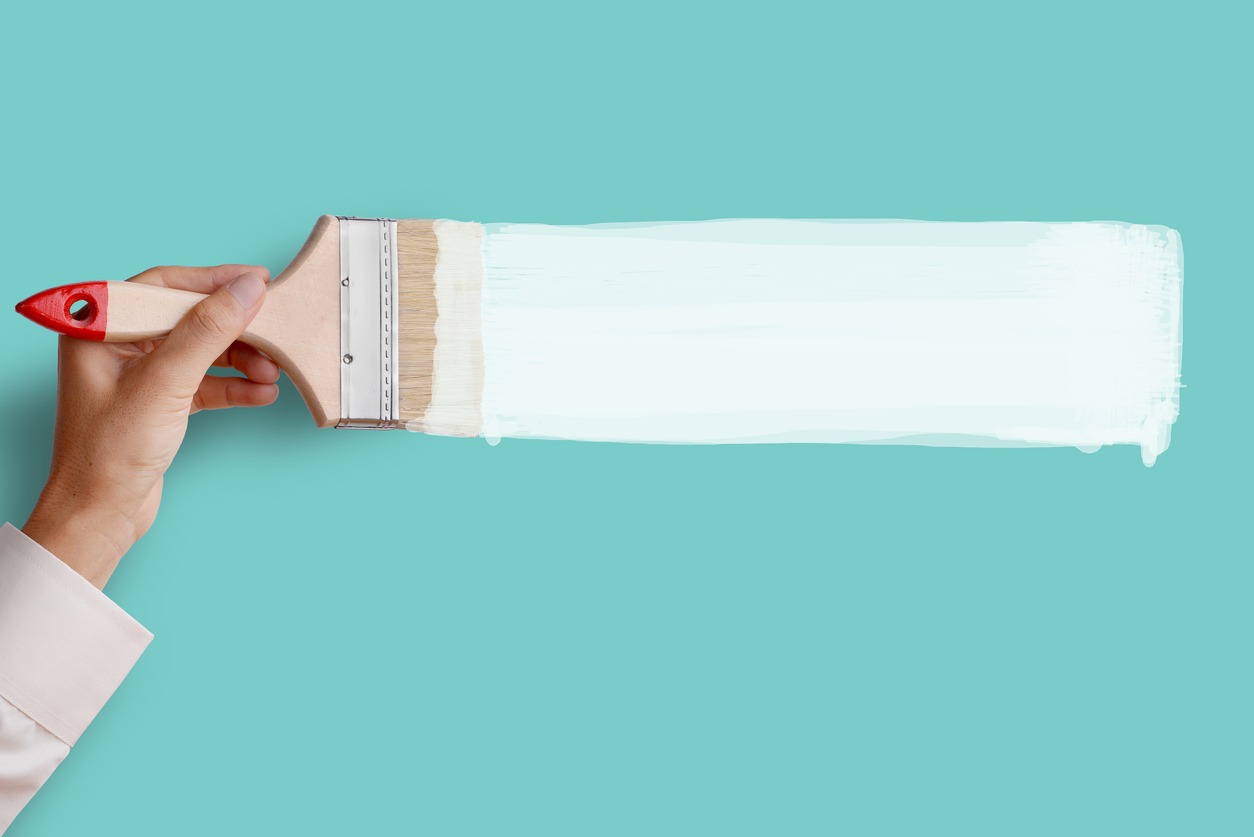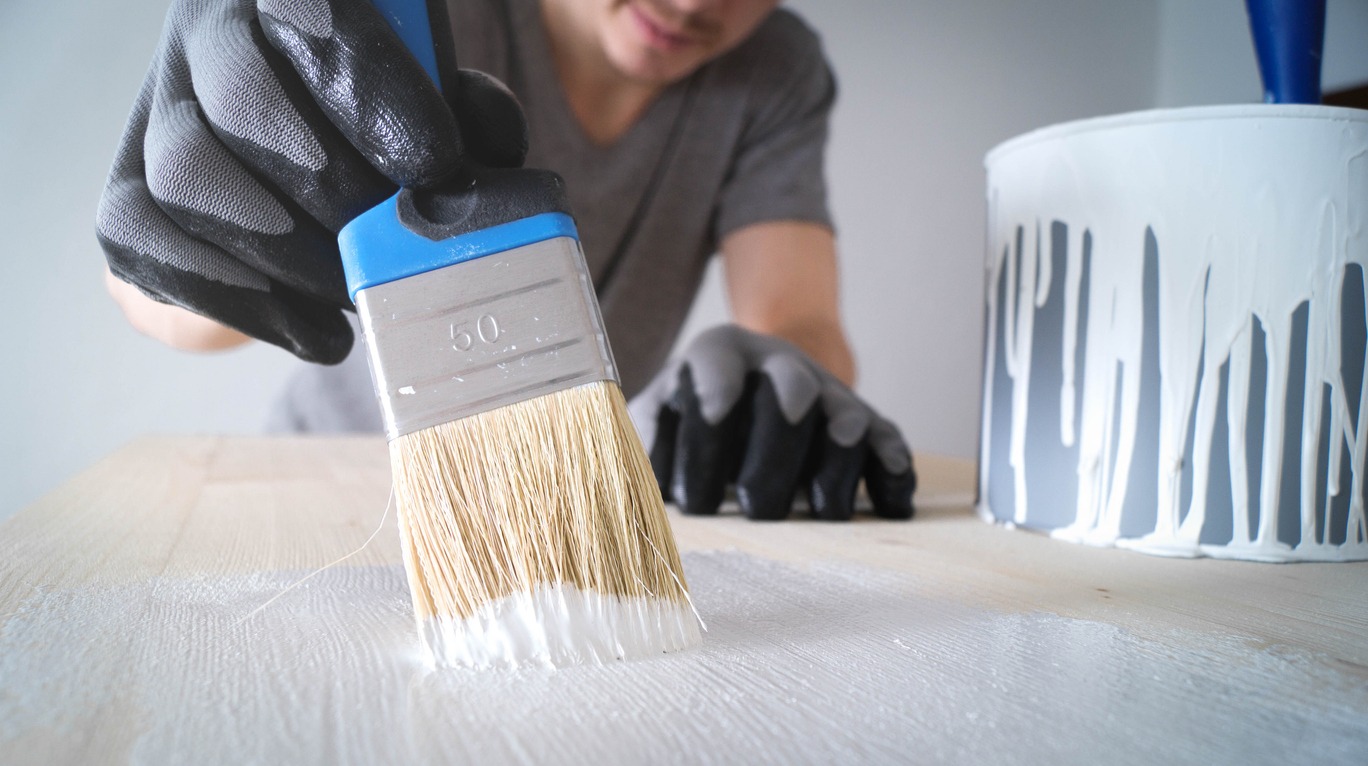Choosing the perfect paintbrush for interior house painting can greatly affect the results of your house painting project. With various types and sizes available, it is important to pick the right one for your specific project. Continue reading as we will guide you through the different options to help you find the best paintbrush for your needs.
Should the Quality of the Paintbrush Matter?
Yes, the quality of the paintbrush matters. Using a high-quality paint brush can make your painting project easier and result in a smoother finish. Good brushes hold more paint, allowing for longer strokes and reducing the number of times you need to reload. This helps you paint more efficiently and saves time.
A quality brush also provides better control and precision. It allows you to cut in clean lines and reach tight corners with ease. The bristles are less likely to shed, preventing unwanted brush marks on your walls. Investing in a good paintbrush can make a noticeable difference in the overall look of your painted surfaces.
How to Find the Perfect Paintbrush for Interior Painting
Here are some tips to help you choose the right brush for your house painting project.
Choose the Right Brush Size
Selecting the correct brush size is important for achieving the best results. For large surfaces like walls, use a wide brush that covers more area quickly. For smaller areas and trim, a narrower brush provides better control and precision. The right size helps you paint more efficiently and reach all areas easily.
Pick the Right Bristle Type
Different bristle types are suitable for different paints. Natural bristles work best with oil-based paints, while synthetic bristles are ideal for water-based paints. Synthetic brushes are more versatile and can handle a variety of paint types. Choosing the right bristle type ensures the paint goes on smoothly and evenly.
Consider the Brush Shape
Brushes come in various shapes, each designed for specific tasks. Flat brushes are good for large, flat surfaces, while angled brushes are perfect for cutting in and detailed work. Round brushes are useful for intricate details and decorative painting. Selecting the right shape helps you achieve a professional finish.
Check the Quality of the Bristles
High-quality bristles are essential for a smooth and even application. Look for brushes with densely packed, soft bristles that do not shed. Quality brushes hold more paint and allow for longer, smoother strokes. This reduces the time spent reloading the brush and minimizes brush marks on the painted surface.
Test the Handle Comfort
A comfortable handle is important, especially for large projects. Choose a brush with a handle that feels good in your hand and allows for a firm grip. This helps reduce hand fatigue and gives you better control over your brush strokes. Handles come in various shapes and materials, so find one that suits your preference.
Look for a Reputable Brand
Brands known for their quality and durability are often the best choice. Research and read reviews to find out which brands are recommended by professionals. A reputable brand will usually offer brushes that perform well and last longer, giving you better value for your money.
How to Use a Paintbrush Properly
Even if you buy the best paintbrush in the market, it wouldn’t be able to apply quality finish on various surfaces if you don’t know how to use it properly. Take a look below for tips to help you use a paintbrush effectively.
Load the Brush Correctly
Dip your brush into the paint, covering about one-third of the bristle length. Tap the brush against the side of the can to remove excess paint. This helps prevent drips and ensures an even application.
Use the Right Stroke
For large areas, use long, smooth strokes to apply the paint evenly. For detailed work, use shorter, controlled strokes. This helps you cover the surface efficiently and avoids brush marks.
Maintain a Wet Edge
Work in small sections to keep a wet edge. This prevents overlapping and creates a uniform finish. Always paint from the wet edge to the dry edge to avoid visible lines.
Apply Even Pressure
Apply consistent pressure on the brush to control the flow of paint. Too much pressure can cause streaks, while too little can result in thin coverage. Find a balance that allows for smooth, even strokes.
Clean the Brush Properly
After painting, clean your brush thoroughly to maintain its condition. Use warm water and mild soap for water-based paints and paint thinner for oil-based paints. Proper cleaning extends the life of your brush and ensures it is ready for future use.
Store the Brush Correctly
Store your brush properly to keep its shape. Hang it or lay it flat to prevent the bristles from bending. Proper storage helps maintain the brush’s effectiveness and extends its lifespan.
Conclusion
By considering the brush size, bristle type, shape, and quality, you can find the right paintbrush for your project. Using the proper techniques in using a paintbrush will also help you achieve a smooth and professional finish.
If you need expert painting services, you can hire our painters at Custom Painting, Inc. Call us at 925-294-8062 or fill out a Contact Form to get started.



